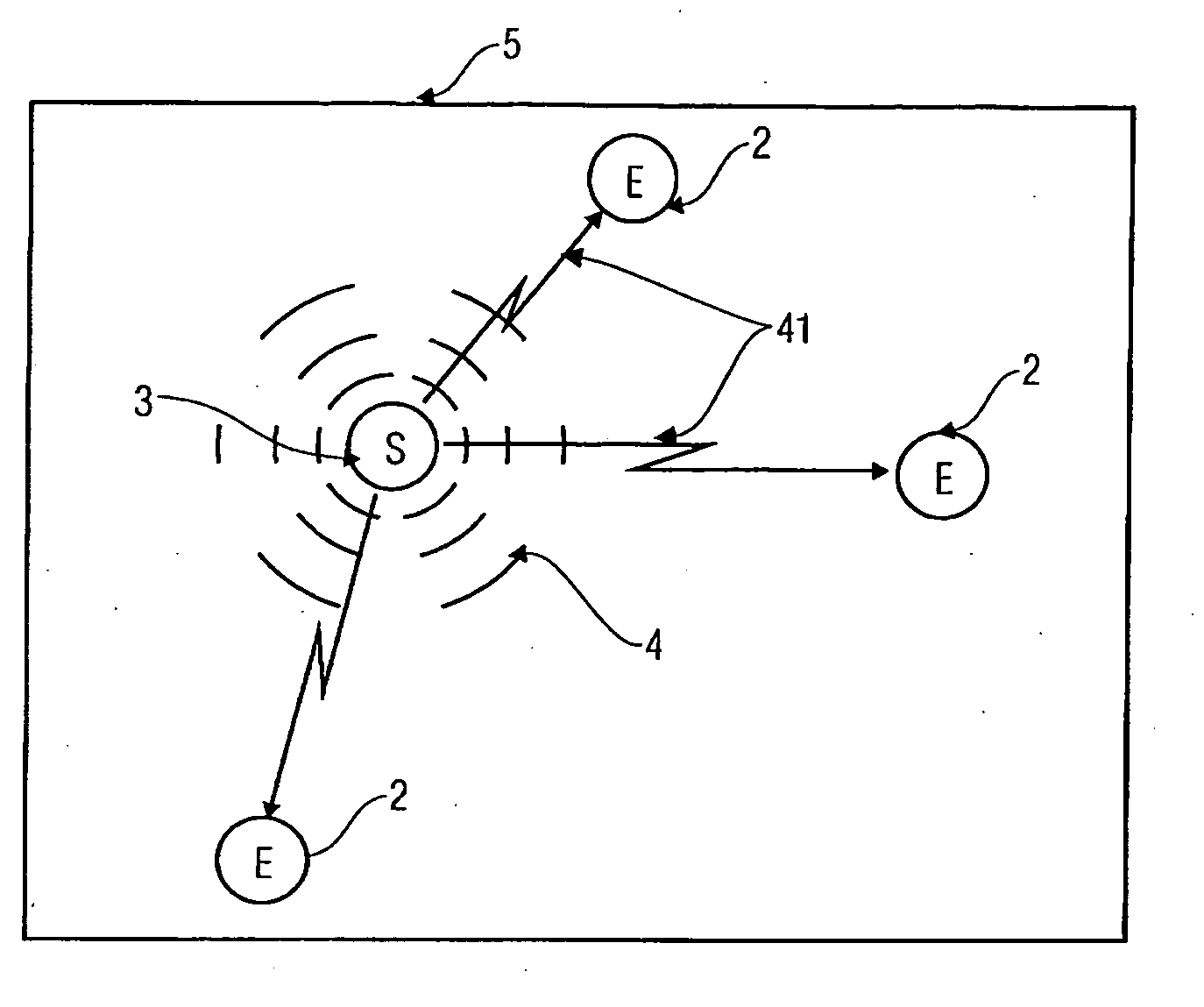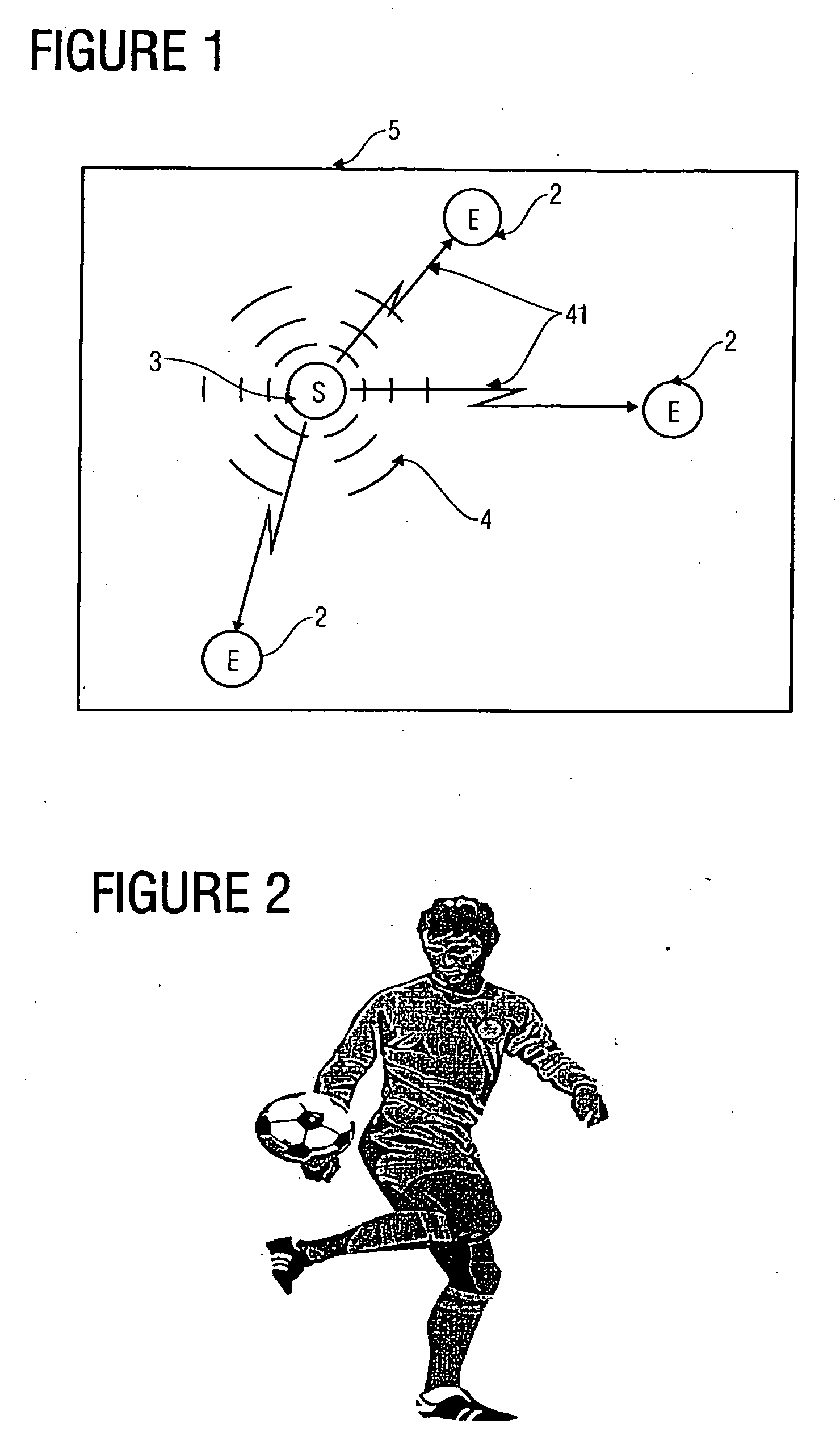Device and method for measuring a rotational frequency of a movable game device
a technology of movable game devices and measuring devices, which is applied in the direction of cosmonautic components, sports apparatus, and reradiation, etc., can solve the problems of large error margin, inability to meet the requirements, and inability to achieve the effect of low cost and efficient measuremen
- Summary
- Abstract
- Description
- Claims
- Application Information
AI Technical Summary
Benefits of technology
Problems solved by technology
Method used
Image
Examples
Embodiment Construction
[0074] To improve one's skills in a ball game or to be able to compare oneself to other players, objective data must be obtained in a simple manner. This data must be visualized such that a training feedback or a comparison to other players is possible. To this end, respective components are provided within the game device, and, if need be, a data detection device including a display unit is provided.
[0075] In a low-cost system, recognition of a person cannot be effected via delay times of the radio signals. To this end, the incoming radio signals would have to be compared to a highly accurate time reference. Also, a network would have to be built within which all times measured are compared to determine that player who is closest to the ball. Therefore, one concludes, from the transmission of a radio signal and an acoustic signal, as to who had the last ball contact.
[0076] By measuring the forces acting on the game device, one may also infer the shot force or the rotational speed...
PUM
 Login to View More
Login to View More Abstract
Description
Claims
Application Information
 Login to View More
Login to View More - R&D
- Intellectual Property
- Life Sciences
- Materials
- Tech Scout
- Unparalleled Data Quality
- Higher Quality Content
- 60% Fewer Hallucinations
Browse by: Latest US Patents, China's latest patents, Technical Efficacy Thesaurus, Application Domain, Technology Topic, Popular Technical Reports.
© 2025 PatSnap. All rights reserved.Legal|Privacy policy|Modern Slavery Act Transparency Statement|Sitemap|About US| Contact US: help@patsnap.com



